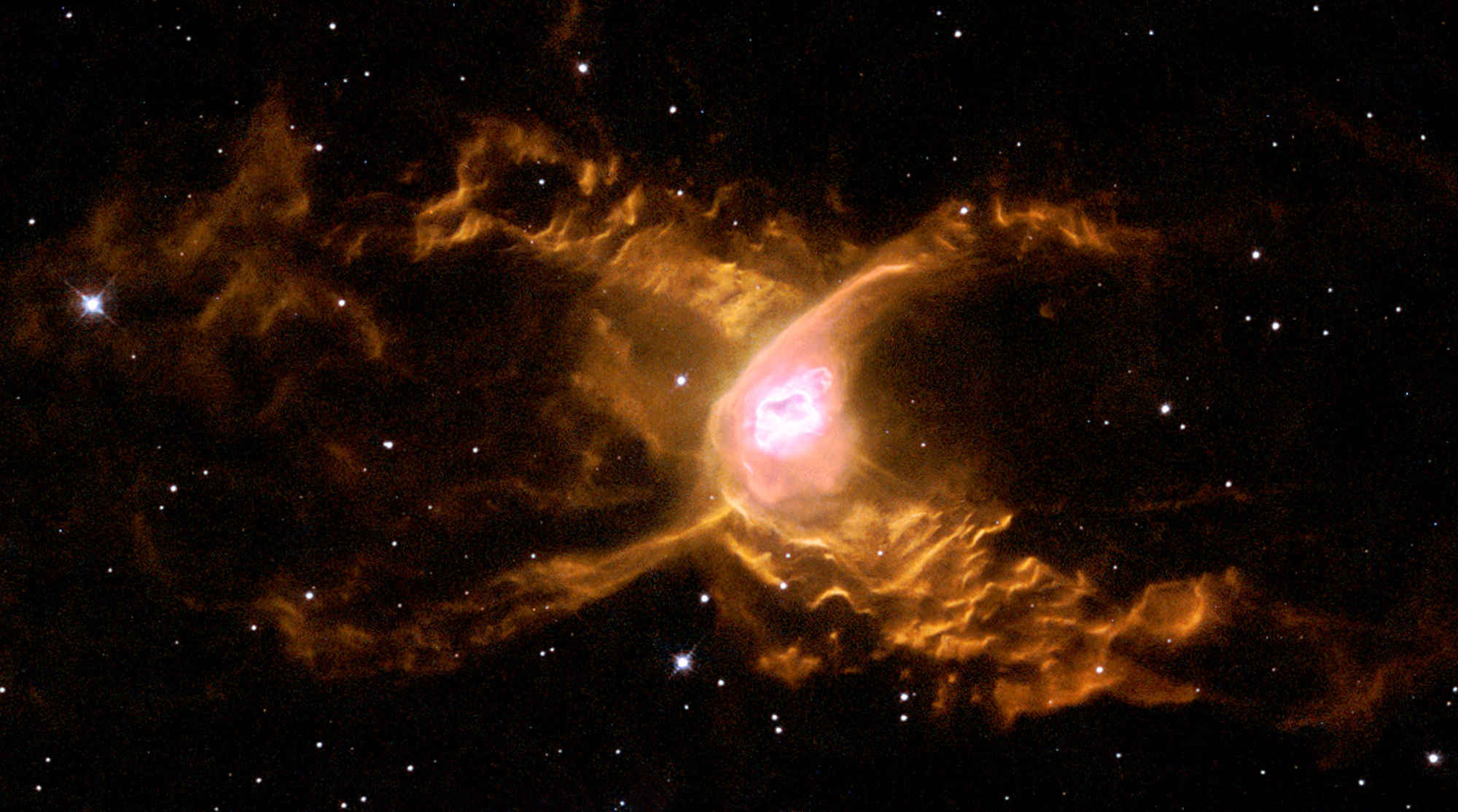Red Spider Nebula Haunts Deep Space in Hubble Photo

The Red Spider Nebula welcomes Halloween with its eerie lobes and ghostly shine.
Large ripples constitute the expansive lobes of the Red Spider Nebula. The two lobes of the nebula represent a typical expression at the end of a star's life, with material from the star gushing into space at high speeds. [Haunting Photos: The Spookiest Nebulas in Space]
The nebula, thousands of light years from Earth in the constellation of Sagittarius, contains one of the hottest known stars which creates waves 100 billion kilometers (62.4 billion miles) high with its powerful cosmic winds. The speed of the waves arise from supersonic shocks forming from local gas compression, heating and rapid expansion in the lobes. Atoms trapped in the the shock create the dazzling radiation seen here.
The Hubble Space Telescope captured using the Wide Field and Planetary Camera 2 (WPFC2) in September pf 1997. The WPFC2 uses five different filters and light from the different elements are colored differently — sulfur ions in red, nitrogen ions in orange, ionized hydrogen in green, atomic oxygen in light blue and ionized oxygen in dark blue.
Hubble has been returning images of the deep recesses of our Universe to us since April of 1990. After being repaired and upgraded with five separate Space Shuttle missions, with the last in 2009. While Hubble could operate into the 2030s, its successor, the James Webb Space Telescope (JWST) is scheduled to launch in 2018.
Follow us @Spacedotcom, Facebook and Google+. Original article on Space.com.
Get the world’s most fascinating discoveries delivered straight to your inbox.

